
Cartons of milk
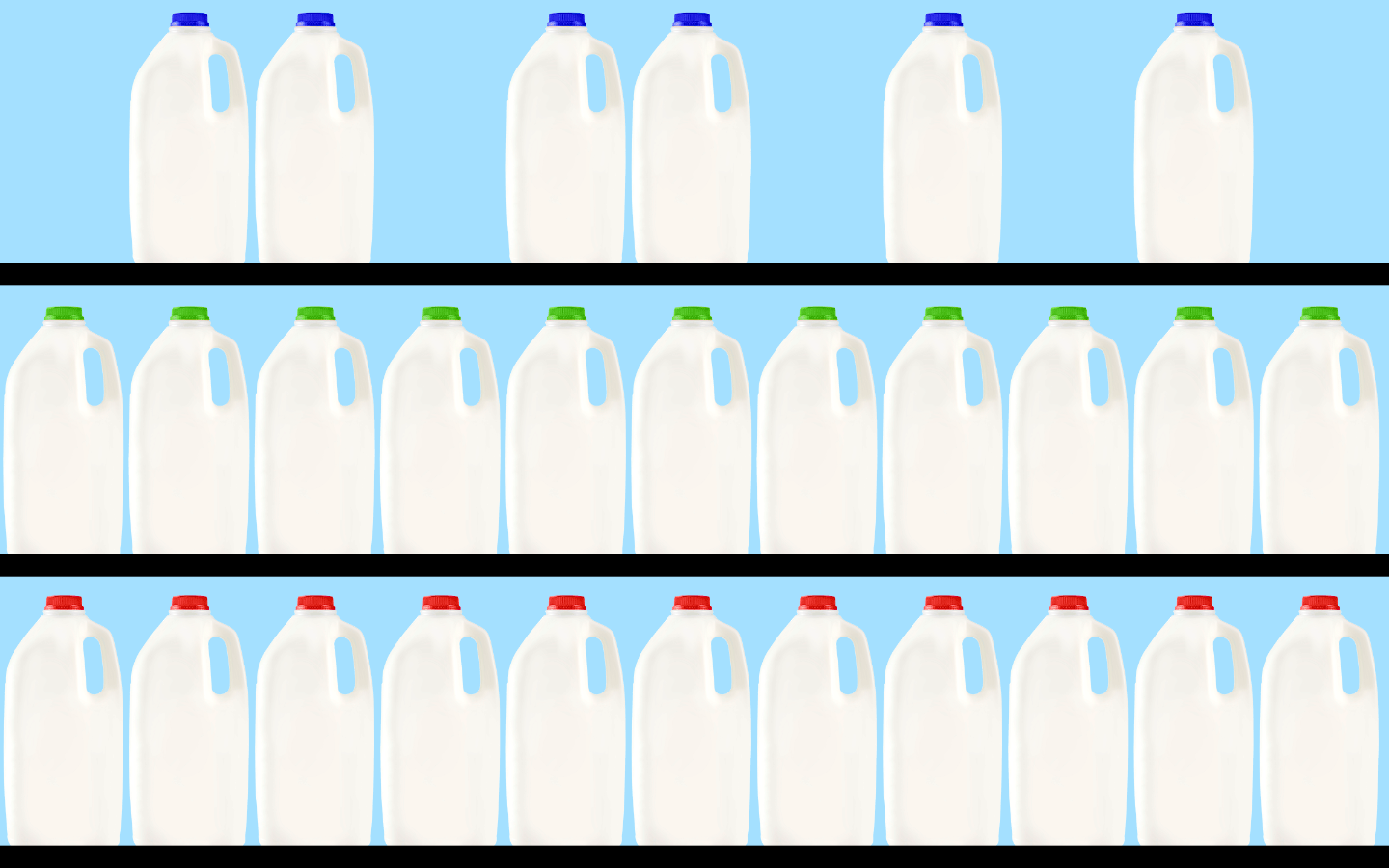
“It’s the young people, apparently,” said the elderly man at my elbow, crouched – like I was – on the floor of Waitrose, looking mournfully at the shelf where the whole milk should be. Not for the first time that week it was bare, bar one small, lonely bottle. “They buy it as soon as it comes in. They’ve found out about it on TikTok, that video thing,” he continued. We straightened up – he with an ease that suggested whole milk was not new to his joints – and discussed the merits of this full-fat fad which at that moment was frustrating our shopping lists.
Up until the past six months, whole milk had been easy to buy, the overwhelming preference in this country having been for skimmed or semi-skimmed. We’d never before competed for full-fat milk or for full-fat yogurt or cheese; now all three were in growing demand (searches for whole milk having grown sharply over the past 12 weeks, according to Google Trends). “It’s good, I suppose,” my confidante shrugged. “They must be cottoning onto the health benefits.” And with that, he headed off to chase down some cheddar.
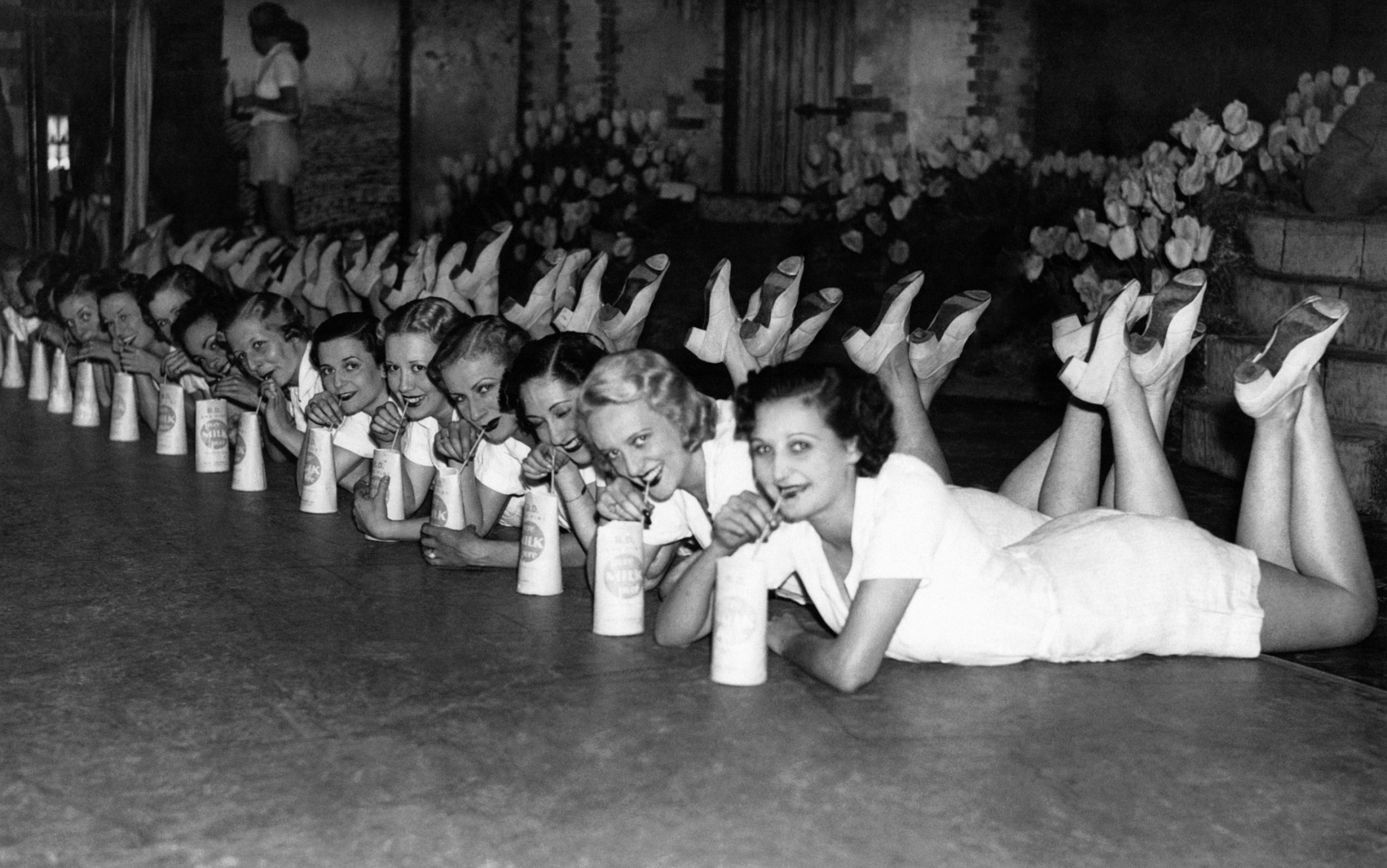
Back in fashion: ‘TikTok, once a haven for vegans, is teeming with wide-eyed influencers extolling the benefits of whole dairy,’ writes Finney – Getty
Over the past three months, sales of whole milk are up 2 per cent compared with the same time period last year – which may not sound like a big spike but it represents millions more litres of whole milk. A third of people surveyed by Waitrose switched from eating a low-fat dairy product to a full-fat one in 2023, with the under-35s most likely to have made the change. TikTok, once a haven for vegans, is teeming with wide-eyed influencers extolling the benefits of whole dairy.
“In the 80s, everyone was afraid of low-fat – but if you’re buying fat-free milk you are doing yourself an injustice, because if it’s good quality dairy what lives in the fat? Omega-3 fatty acids,” proclaims The Grocery Store Guy, Bobby Parrish, on the platform. In this video, which is set in the States, Parish was careful to specify milk from grass-fed cows – but no such clarification is needed in the UK, where the diet of most cows is grass-based.
The health benefits of full fat vs low fat
For once, the TikTok claims match up to the facts: milk from grass-fed cows is indeed rich in omega-3 fatty acids, as well as other vitamins – but, being fat soluble, these are removed when the fat is skimmed off. “When manufacturers remove the fat, many healthy compounds like omega-3 and some vitamins may be removed at the same time,” says Telegraph columnist and professor of epidemiology Tim Spector. “Studies have failed to show any good evidence that low-fat dairy is better than full-fat dairy.”
Though the phantom of fat (and all its negative connotations) has haunted us for years, it is only now being exorcised thanks to Spector’s efforts and those of dietitians and nutritionists. “Early studies showed that diets high in saturated fat, like you find in dairy and meat, were linked to heart disease,” he says. “Other types of fat, like polyunsaturated and monounsaturated fats, weren’t associated with health problems – but at that time, the powers that be decided people may not understand the difference between these types of fat, so they advised everyone to limit all fat,” he explains.

Gordon Ramsay in the Make Mine Milk advertising campaign in 2010, launched to promote the benefits of low-fat milk to teenagers and families – Shutterstock
These national guidelines were introduced in the UK in 1983, following studies which suggested saturated fat is the chief villain when it comes to obesity and heart disease. Over the ensuing seven decades, randomised trials and meta-analyses have repeatedly questioned the merits of a low-fat diet – but it has been enshrined in American and British health guidance, and in our national psyche.
“As scientists dug deeper into the effects of fat on health, it became clear that full-fat dairy doesn’t have the negative effects on health we once thought. But because it takes a long time for official recommendations to change, full-fat dairy is still, wrongly, in the dog house,” says Spector.
At least, it is for some people. Those aged 18 to 35 are forming their own conclusions, thanks, yes, to TikTok and – for those closer to 35 – scientists like Spector. Where their parents once counted calories and cut back on fat, they now focus on whole foods and gut bacteria; low-fat products – which are by definition more processed than their full-fat alternatives – have no place.
Indeed, of the reasons cited in Waitrose’s survey for switching to full-fat products, the most common were flavour, and concerns about hidden sugars in more processed lower fat foods. In the survey, where respondents could select all reasons that applied to them, 40 per cent cited flavour, 40 per cent concerns around more processed alternatives and 21 per cent said they were no longer counting calories, another health measure that has been called into question in recent years.
Full-fat vs low-fat yogurts: the nutritional breakdown
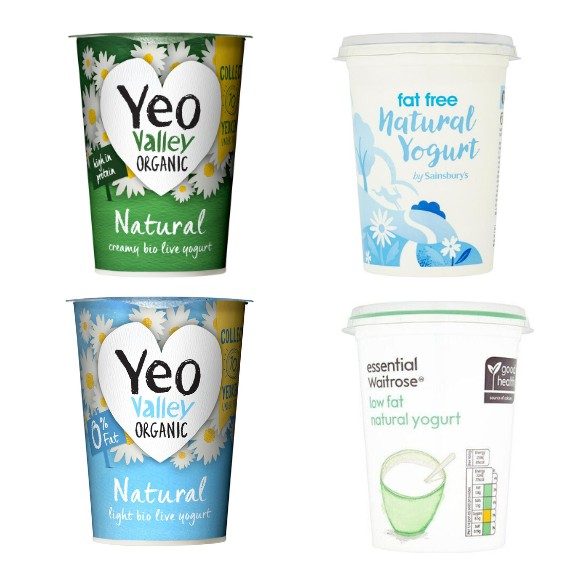
yogurt
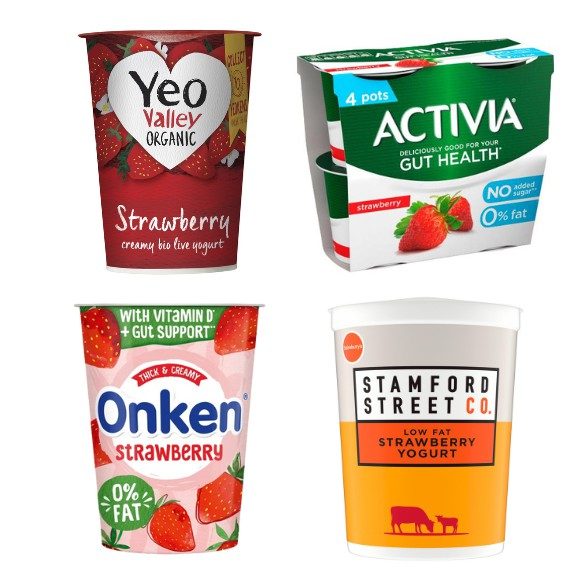
yogurt
A protest against processed foods
“For the past few years the biggest trend has been alternatives to dairy milk such as soya or almond milk, which attracted not just vegan customers but those wanting a ‘healthier option’, but over the past year we’ve noticed that more and more customers are choosing whole milk,” says Waitrose’s milk buyer Rachel Arlidge. “This change is driven by people becoming more focused on their gut health and looking to add more whole foods into their diets.”
Organic milk and dairy producer Yeo Valley agrees: it has found sales of low-fat and fat-free yogurt are declining year on year, a trend which “reflects consumers’ growing recognition that minimally processed foods are more in line with the nutrients our bodies have spent thousands of years consuming”, says brand manager Beth Katuszka. Though our understanding of gut health is still in its infancy, what we know so far suggests increasing our consumption of whole foods and reducing our consumption of ultra-processed foods makes sense.
“Low-fat versions of products tend to include a range of ingredients to make up for the loss of flavour and texture once the fat is removed. These often include emulsifiers, sugars, starches and other artificial ingredients [which are] likely less healthy than the fats you’ve removed,” says Spector.
The Predict study conducted by his nutritional programme Zoe – the largest in-depth nutritional research programme in the world – suggests ultra-processed foods like these are less healthy for the gut microbiome, whereas whole or minimally processed foods, particularly fermented, probiotic dairy like live yogurt, artisan cheese (the processing of industrial cheese destroys the more beneficial bacteria) and kefir have a beneficial effect.
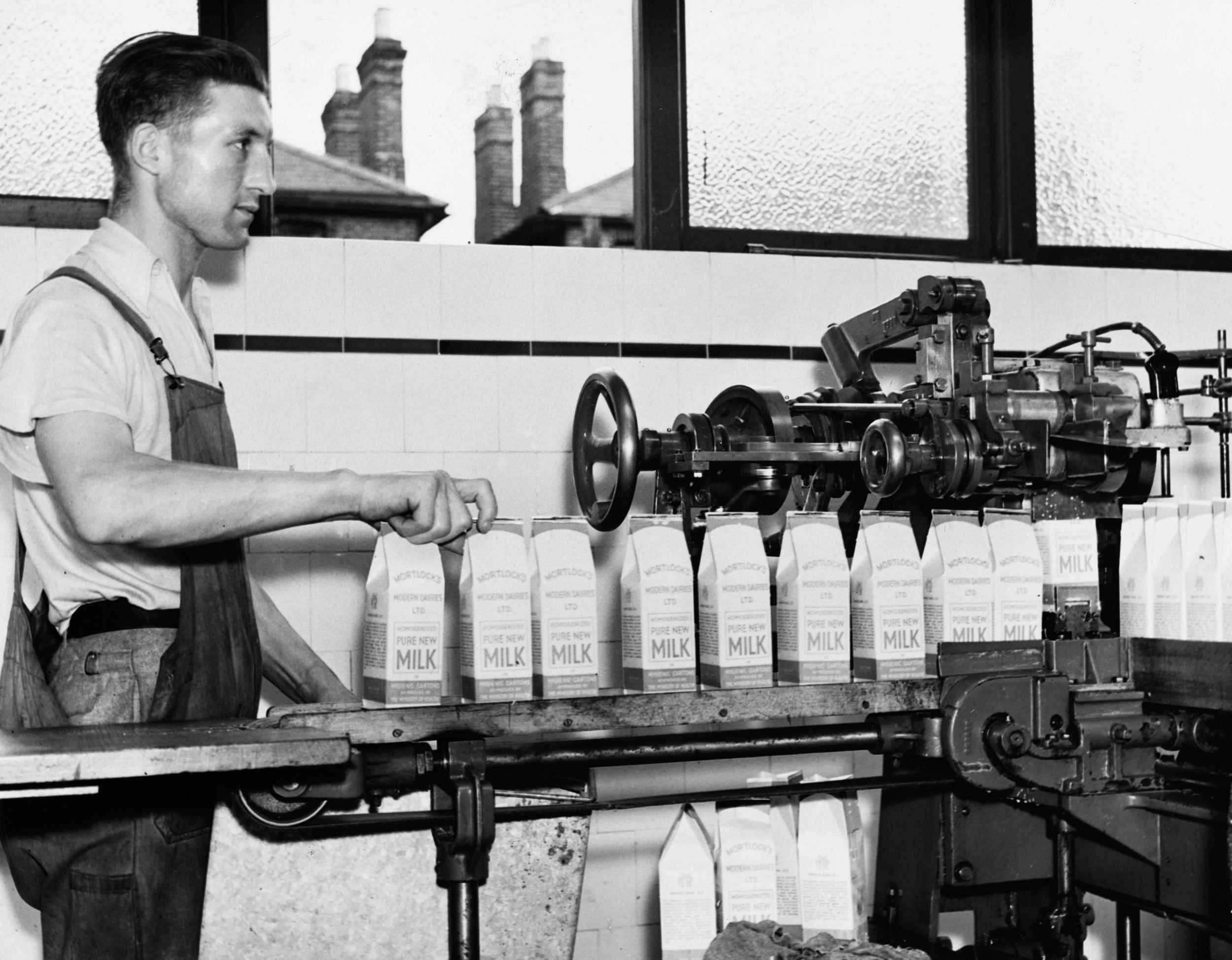
Back to basics: consumers are increasingly looking to purchase minimally processed foods, like milk – Getty
So why has the full-fat myth lingered for so many years? As early as 2005, food writer and author Jennifer McLagan wrote a book entitled Fat: An Appreciation of a Misunderstood Ingredient, which detailed both the then little-known nutritional benefits of animal fat and the culinary benefits it has to offer. “I thought I would change the world; instead, no one believed me,” she admits. “It is socially and culturally ingrained that people who eat fat, get fat.”
Medical research is expensive; but there is no money in promoting whole foods, which are not modified to reduce the cost of production and so offer very limited profit margins. As a result, studies supporting the “eat fat, get fat” argument have been more likely to get sponsorship – and publicity – than those critiquing it.
“It’s fascinating when you read scientific papers when they are not being sponsored by someone who profits from low-fat food or anti-cholesterol medication,” McLagan continues, citing an Iranian study in 2017 which concluded that “the majority of evidence supports the hypothesis that dairy fat intake is not typically accompanied with a higher risk of weight gain, CVD [cardiovascular disease], or Type 2 diabetes. This is in contrast to most dietary guidelines recommending the increased consumption of low-fat or fat-free dairy products.”
Taste over calorie counting
Yet this trend is not just about health. It’s also about flavour, which in the Waitrose report was as oft-cited as gut health as a reason for switching to full fat. “The reason they add sugar and flavourings to fat-free yogurt and cheese is that it doesn’t have the satisfying richness,” McLagan says. “Fat is flavour and taste.” Fat is satiating. “It slows the flavour across your tongue.
If you think about having skimmed milk versus whole, it takes longer to take in those flavours,” she continues. Sure enough, I’ll linger longer over – and eat less of – Yeo Valley’s black cherry yoghurt with live cultures than I will over a cherry-flavoured Muller Light “equivalent” – which incidentally is so unsatiating it was downgraded from “syn-free” to a “syn” by Slimming World in 2018, because members were consuming too much.
We are health-conscious, then – perhaps more so than ever before – but still value taste. We’ve rediscovered that good flavour goes further, whether it’s milk, yogurt or artisan cheese, and that enjoying one’s food should not be a secondary function. It is a good thing that the young – and old – are switching to full-fat foods. I just hope the shops stock up.
The changing face of fat
1940s
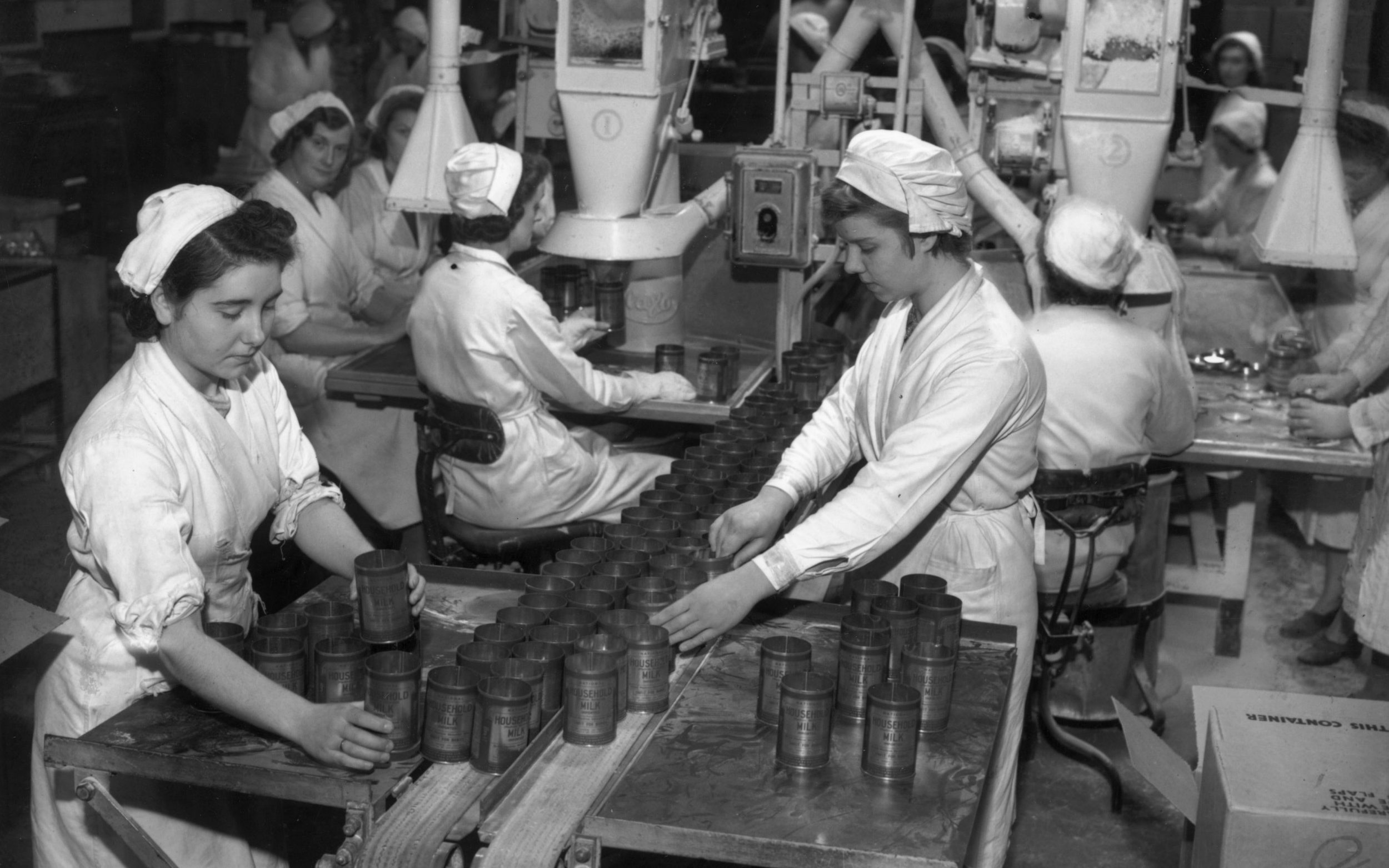
Factory workers producing powdered milk in 1941 – Getty
Post the Second World War, milk companies seek to find a new market for the skimmed milk powder they’d supplied to troops and war relief programs, promoting skimmed milk as a valuable product in its own right. Slimming culture is already taking off; the idea of low-fat milk is a neat fit.
1950s
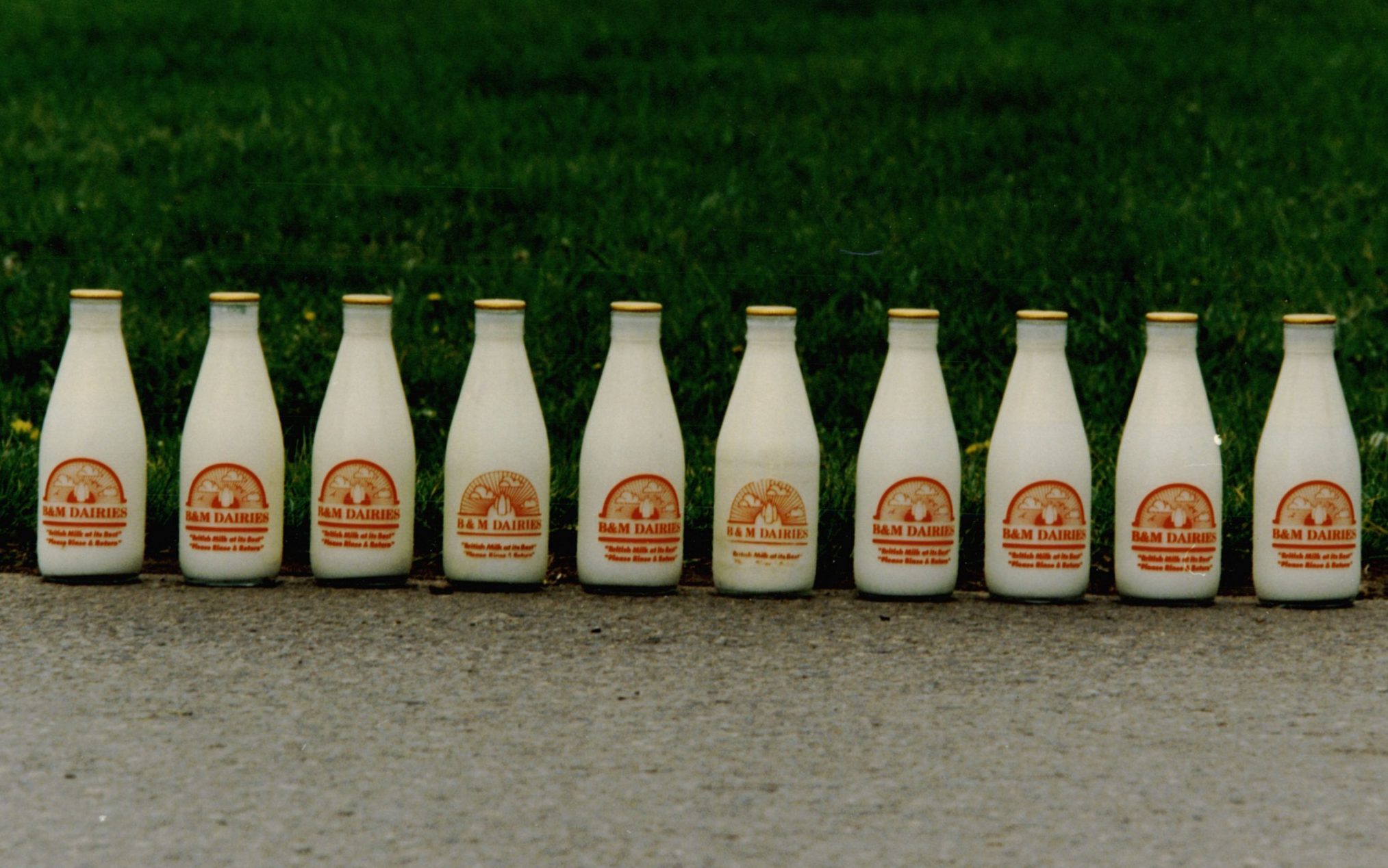
These bottles are topped up with cream – Shutterstock
Gold Top milk (topped with cream) is introduced to the UK after Jersey and Guernsey cow farmers form a co-operative. Though skimmed and semi-skimmed milk are gaining in popularity, many Brits ask their milkmen to leave a pint of Gold Top on the weekends as a treat.
1980s
UK government introduces dietary guidelines recommending people reduce their overall dietary fat consumption to 30 per cent of total energy intake and saturated fat to 10 per cent.
1980s and 90s
Food manufacturers realise they can profit from the low-fat ideology, replacing fat with sugar, emulsifiers and other additives, and using the fat for other products. Low-fat spreads, yogurts and cheese fill the grocery shelves.
2010s
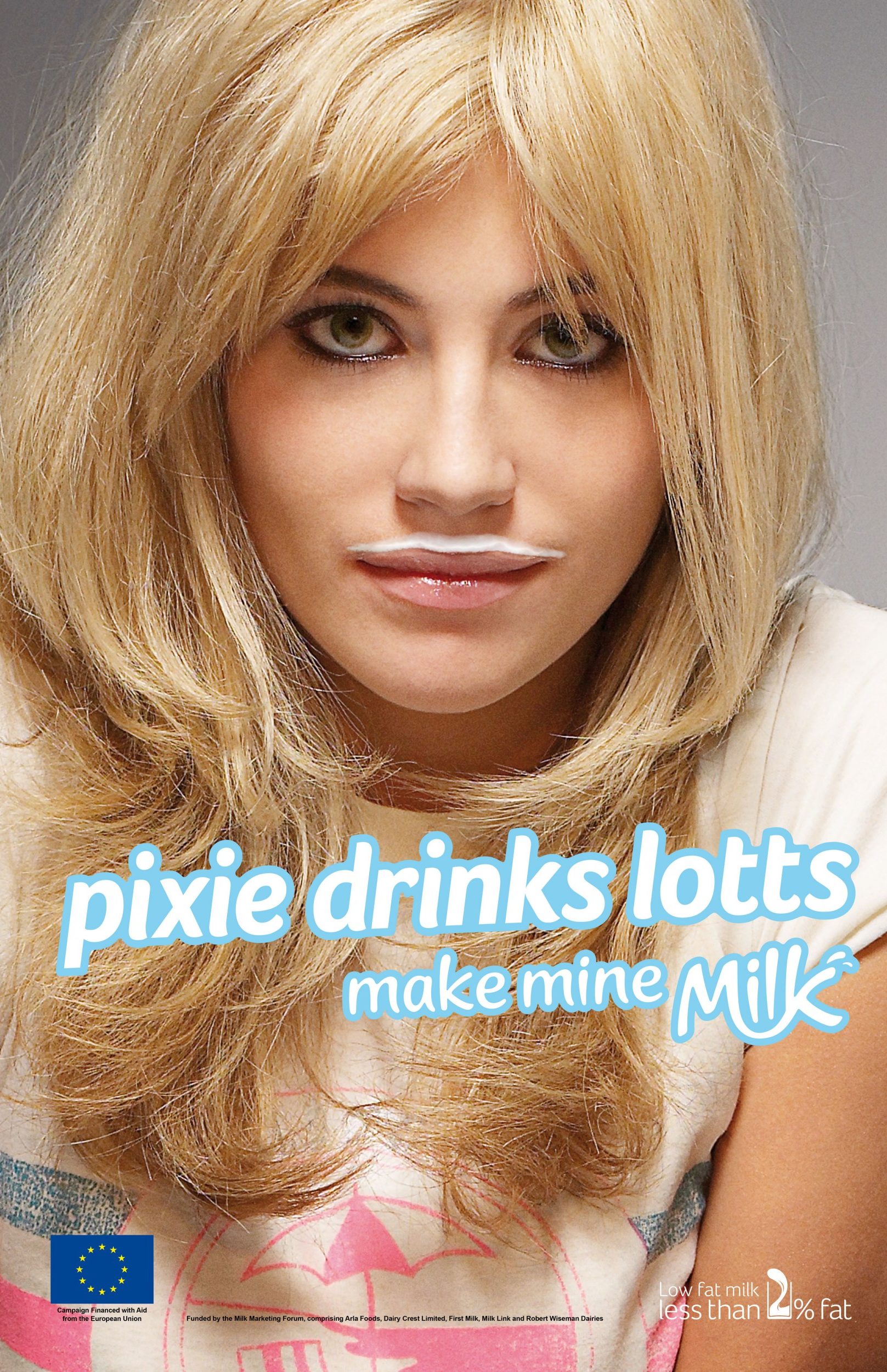
Pixie Lott in the ‘Make Mine Milk’ campaign – Shutterstock
Whole milk is back in fashion thanks to a surge in quality coffee; baristas pay more attention to the sourcing of beans, but also the milk they’re served with. The properties of whole milk make it suited to creating foamy cappuccinos and smooth flat whites.
2015
Front pages are dominated by a major study arguing dietary fat guidelines introduced in the 1980s lacked a rigorous evidence base.
2018
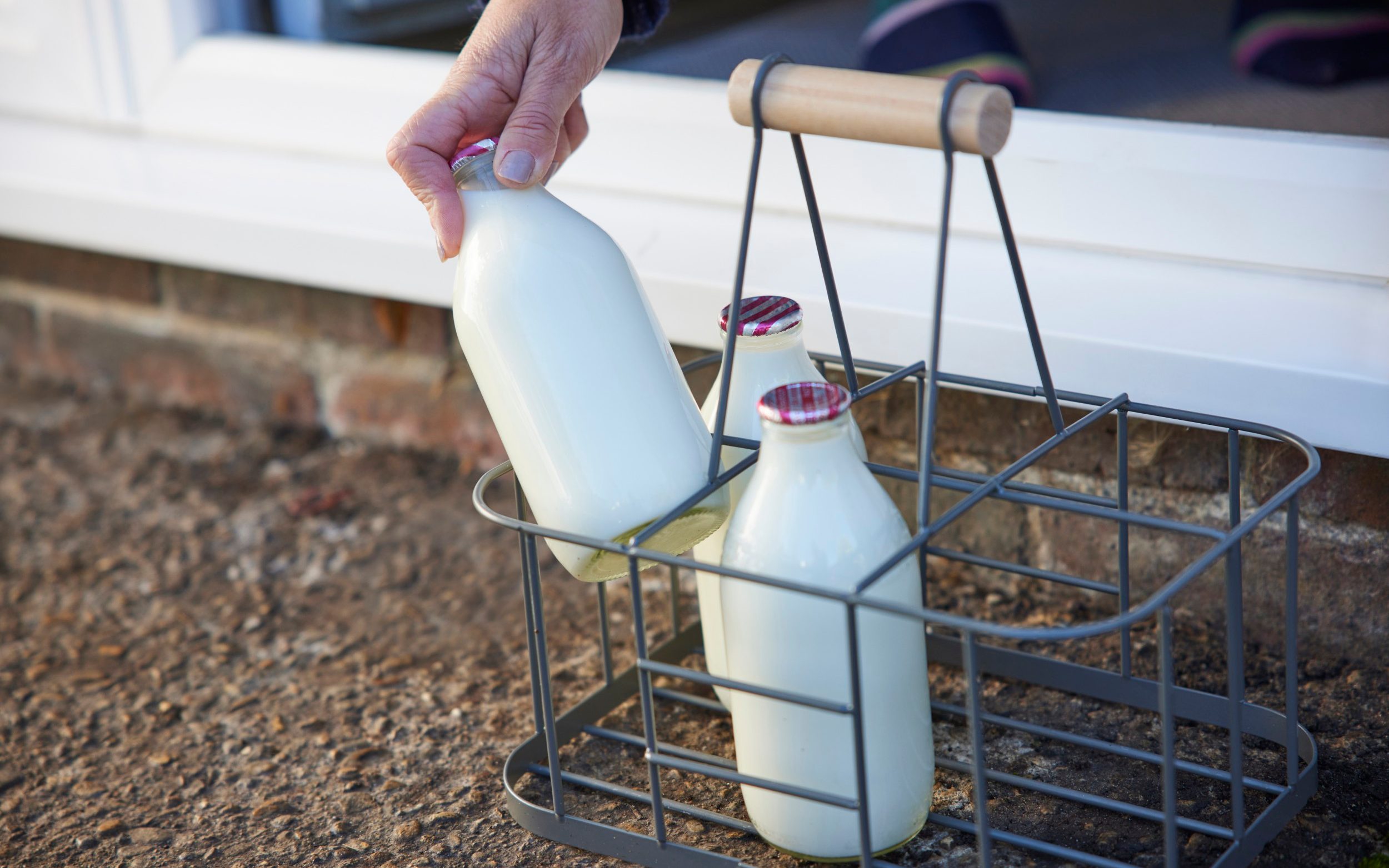
milk
The Lancet publishes research suggesting eating dairy products of all kinds is associated with a lower risk of premature death, cardiovascular disease and stroke.
2019

Hugh and Anita from the BBC series War on Plastic – Jacky Sloane
Semi-skimmed milk still occupies the largest share of cow’s milk volume sales (60.5 per cent), but whole milk’s share in the market is growing. So too is demand for glass bottles, after BBC series War on Plastic with Hugh and Anita highlights the issues around single-use plastic, leading to staggering increase in demand for milk delivery services.
2020s
Artisan milk producers – among them The Estate Dairy, Ivy House Farm and Hollis Mead – are increasingly visible in delis, coffee shops and independent retailers, selling milk in cool, covetable glass bottles. Farm-based milk vending machines are also on the rise; by 2022 there are roughly 400 across the country.
2023

A Golden Hooves milk vending machine in Somerset
Golden Hooves, part of farmer co-operative First Milk, instals a milk vending machine at a Spar store in Nunney, Somerset, the first appearance of such a machine in a retail store.
Recommended
Why your gut health should be a priority in 2024
Read more
%n
Sign up to the Front Page newsletter for free: Your essential guide to the day’s agenda from The Telegraph – direct to your inbox seven days a week.
News Related-
Recall Just Announced For Popular Cookies Featured In Holiday Gift Baskets
-
Eagles rally past Bills in overtime as Chiefs win
-
Reality bites the green energy agenda
-
Sandigan orders Marcos Sr. pal to pay workers
-
DSWD: Shear line, LPA affect 1.2 million people; over 18,000 families evacuated
-
The mayor of Paris is making a loud exit from X, calling the platform a 'gigantic global sewer'
-
Rain showers, thunderstorms over Luzon, including Metro Manila — Pagasa
-
'Naruto' live-action film adaptation is in the works
-
NASA Highlights Stingray Nebula
-
Manila's Lagusnilad underpass opens
-
China probes debt-ridden financial giant
-
China's VUCA situation
-
Unraveling the mystery that is diabetes
-
Bangladesh's nuke plant is not going to steal PH investments
